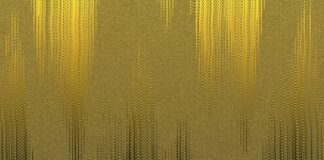Light Field Displays: Exploring the Future of Visual Technology
In the rapidly evolving landscape of visual technology, light field displays have emerged as a promising advancement that could reshape our interaction with digital content. These displays aim to recreate the natural way our eyes perceive light, enabling viewers to experience images with unprecedented depth, clarity, and realism. By manipulating the properties of light, light field displays have the potential to revolutionize industries such as entertainment, virtual reality, and medical imaging. This article delves into the concept of light field displays, their underlying principles, and the implications they hold for the future of visual experiences.
Understanding Light Field Displays
At its core, a light field refers to the collection of all light rays traveling in every direction through a given space. Our eyes capture a portion of this light field and our brain processes it to construct the visual scene we perceive. Light field displays seek to mimic this phenomenon by generating images that replicate the original light field, allowing viewers to explore and experience images in ways that conventional displays cannot achieve.
Unlike traditional displays that emit light directly towards the viewer, light field displays emit light in multiple directions, enabling each viewer’s eyes to receive a slightly different perspective. This dynamic quality enables an illusion of depth and parallax, simulating the way we naturally perceive objects in the physical world. By presenting the eyes with different angles of light, light field displays create a more immersive and engaging visual experience, bridging the gap between the flat screens and the three-dimensional reality.
The technology behind light field displays encompasses a combination of hardware and software innovations. An array of micro lenses or optical elements is often integrated into the display’s panel. These lenses help to control the direction of emitted light, ensuring that each viewer receives a unique set of rays corresponding to their specific vantage point. On the software side, complex algorithms process the captured light field data and render it into coherent images that maintain depth and perspective as the viewer’s position changes.
The Potential Impact
The potential applications of light field displays span a wide range of industries, each benefitting from the technology in distinct ways. One of the most notable fields is entertainment, where these displays could redefine the way we watch movies, play games, and consume digital media. Imagine watching a movie and being able to shift your perspective within a scene, observing details from different angles as if you were physically present on set. This level of interactivity could create a new form of immersive storytelling that engages audiences in unprecedented ways.
In the realm of virtual reality (VR), light field displays hold transformative potential. Current VR experiences often struggle to fully replicate the complexities of human vision, leading to phenomena like motion sickness. Light field displays could alleviate these issues by providing more accurate visual information, reducing the cognitive dissonance between what the eyes see and what the brain expects. This advancement could lead to VR environments that feel more natural and intuitive, making virtual experiences more comfortable and enjoyable.
Beyond entertainment, light field displays have practical applications in fields like medical imaging and scientific visualization. Medical professionals could use these displays to view and manipulate complex 3D data sets with greater precision. Surgeons, for instance, might benefit from being able to interact with detailed, lifelike representations of patients’ anatomy before performing intricate procedures. Similarly, scientists could use light field displays to explore complex simulations and datasets, gaining new insights through interactive exploration.
Challenges and Future Developments
While the potential of light field displays is exciting, the technology is not without its challenges. One significant hurdle is the computational power required to process and render the immense amount of data associated with light fields. Real-time rendering of dynamic scenes demands substantial processing capabilities, and researchers are actively working on optimizing algorithms and hardware to meet these demands.
Another challenge is the requirement for specialized content creation to fully leverage the capabilities of light field displays. Traditional 2D images and videos would not fully exploit the technology’s potential. Instead, content creators would need to produce or adapt their work to include the extra layers of information required for the light field display to function effectively. This transition could pose challenges in terms of workflow and tools but also presents an opportunity for innovative content creation methods.
As the technology evolves, we can anticipate further refinements and improvements in light field displays. These advancements could include higher resolution displays, wider viewing angles, and enhanced realism. Additionally, as the technology becomes more widespread and accessible, it may drive collaboration across disciplines, leading to breakthroughs in computer graphics, optics, and neuroscience.
Conclusion
Light field displays represent a remarkable convergence of art, science, and technology. By mimicking the way light behaves in the real world, these displays have the potential to unlock entirely new dimensions of visual experiences. From entertainment and virtual reality to medical imaging and scientific research, the applications of light field displays are vast and diverse. While challenges remain, the pursuit of this technology is driving innovation, pushing the boundaries of what we thought was possible in the realm of visual displays. As researchers, engineers, and creators continue to explore the potential of light field displays, we stand on the brink of a new era in how we perceive and interact with digital content.
Depth and Parallax Simulation:
Light field displays replicate the way our eyes perceive depth and parallax in the real world, creating a more immersive and realistic visual experience by presenting different perspectives to each viewer.
3D-Like Viewing Experience:
Unlike traditional displays that offer a flat view, light field displays provide a multi-dimensional viewing experience, allowing users to perceive depth and distance as if objects were truly three-dimensional.
Interactive Perspective Shifts:
Viewers can interactively change their perspective within an image or scene, exploring different angles and vantage points in real-time, enhancing interactivity and engagement.
Reduced Motion Sickness in VR:
Light field displays have the potential to reduce motion sickness in virtual reality by providing more accurate visual information, matching the natural way our eyes perceive motion and depth.
Immersive Entertainment:
In entertainment, light field displays can revolutionize the way movies and games are experienced, enabling viewers to observe scenes from various angles and enhancing storytelling by involving audiences in a novel manner.
Accurate Medical Imaging:
Medical professionals can utilize light field displays to visualize and manipulate complex medical imaging data in 3D, improving diagnosis, surgical planning, and medical education.
Scientific Data Visualization:
Researchers can explore intricate scientific simulations and datasets more effectively, gaining new insights through interactive exploration and analysis.
Optical Realism:
Light field displays mimic natural light behavior, resulting in images that possess a high degree of optical realism, making digital content appear more lifelike and convincing.
Collaborative Interaction:
Light field displays enable collaborative viewing experiences, where multiple users can interact with the same content from different perspectives simultaneously, fostering collaboration in various fields.
Content Creation Innovation:
The adoption of light field displays necessitates innovative content creation methods, encouraging creators to develop new ways of storytelling and visual presentation to fully exploit the technology’s potential.
Light Field Displays: A Glimpse into the Future of Visual Exploration
The pursuit of creating ever more immersive visual experiences has been a driving force in the technological advancement of displays. From the early cathode ray tubes to the modern LED screens, the evolution of displays has been marked by continuous innovation to enhance image quality, color accuracy, and viewing angles. However, amidst this journey, a revolutionary concept has emerged – light field displays. These displays don’t just aim to enhance the conventional parameters of visual quality; they seek to fundamentally transform how we perceive and interact with digital content.
At the heart of the concept lies a deep understanding of the way light interacts with the world around us. Light, with its dual nature of behaving as both a particle and a wave, has fascinated scientists and artists alike for centuries. Capturing and harnessing this intricate behavior is at the core of light field displays. These displays are not simply about brighter screens or more pixels; they are about capturing the subtleties of light’s behavior to craft an experience that mirrors the richness of our natural visual encounters.
In the realm of conventional displays, each pixel emits light directly towards the viewer, resulting in an image that is sharp when viewed head-on but loses clarity as the viewing angle changes. This limitation, while an accepted norm in the display world, is far from how our eyes perceive the world. Imagine looking at an object – as you move your head or change your perspective, your eyes capture different angles of light, leading to a seamless transition of visual information. This natural phenomenon is the essence of light field displays.
Light field displays employ an array of micro lenses or optical elements that work in harmony to direct light in multiple directions. Each lens contributes to steering light rays according to their angle, ensuring that when they reach the viewer’s eyes, the brain interprets them as coming from various perspectives. This manipulation of light replicates the parallax effect – a visual cue that our brain uses to understand depth and spatial relationships. The result is an image that doesn’t just appear on the screen; it stretches into the depths, allowing viewers to explore, not just observe.
The potential of light field displays is boundless. Imagine a surgeon using this technology to plan a complex surgery. Instead of relying solely on 2D medical images, they could interact with a 3D representation of the patient’s anatomy, moving around it to gain a comprehensive understanding. This level of interaction could lead to more precise surgeries and reduced risks. Similarly, architects and designers could use light field displays to immerse themselves in their creations, understanding spatial relationships and proportions more intuitively.
In the world of art and entertainment, the adoption of light field displays could revolutionize how we experience creativity. Filmmakers could create scenes with a new layer of interactivity, allowing viewers to follow different characters or explore various elements within a scene. Imagine watching a crime drama and being able to shift your focus between the investigator and the suspect, choosing your perspective and, in turn, influencing the storyline. This form of interactive storytelling brings a level of engagement that traditional screens simply cannot replicate.
The fusion of light field displays with augmented reality (AR) and virtual reality (VR) holds the promise of truly transformative experiences. Imagine wearing AR glasses that seamlessly blend digital objects into your real-world environment, all while accurately capturing the depth and spatial interactions. The lines between the digital and physical realms blur, and the possibilities for gaming, education, and communication expand exponentially.
The journey towards practical and accessible light field displays is not without challenges. The computational power required to process the immense amount of data associated with light fields is substantial. Real-time rendering of dynamic scenes necessitates robust hardware and efficient algorithms. The creation of content optimized for light field displays also presents a creative and technical hurdle. Designers and creators need to adapt their workflows to accommodate the extra dimensions of information that light field displays demand.
Nonetheless, researchers, engineers, and artists are pushing the boundaries of what’s possible. As technology advances, the potential for higher resolutions, wider viewing angles, and enhanced color accuracy becomes increasingly likely. Moreover, as the technology matures and gains traction, it’s likely that its integration with other cutting-edge technologies will lead to synergistic developments that we can only imagine today.
In conclusion, light field displays are not just about pushing the envelope of visual quality; they are about redefining the very way we interact with digital content. By replicating the complexities of light and vision, these displays bridge the gap between the flat world of screens and the multi-dimensional reality we experience. From medical diagnostics to immersive entertainment, their applications are diverse and far-reaching. As we stand on the cusp of a new era in visual technology, the journey of light field displays represents a testament to human ingenuity and our ceaseless quest to perceive the world in ever more remarkable ways.














